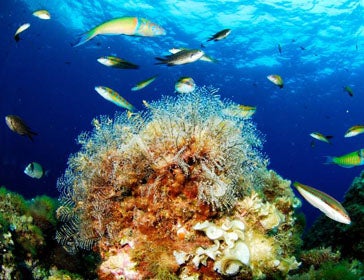Marine Strategy Framework Directive: Overview

Oceana calls on EU Member States to rapidly implement the Marine Strategy Framework Directive and take the necessary measures to restore and maintain the health and productivity of European seas.
Over 50% of Europe’s territory is covered by sea, but Europe’s marine environment is highly threatened by both pollution and the dramatic loss of marine species and habitats. The June 2008 Marine Strategy Framework Directive is the first EU binding law designed to make a significant contribution to the preservation, protection and restoration of marine ecosystems, including pollution reduction and minimization. The Directive aims at achieving good environmental status (GES) in the EU marine waters by 2020 at the latest. According to the Directive, EU Member States should undertake a series of steps to progressively achieve this good environmental status which should ensure the maintenance of ecologically healthy, clean and productive seas as well as reduce adverse human impacts on marine ecosystems.
Each Member State has to work to implement measures both at the national (Marine Strategies) and regional scale, through regional cooperation and the use, when appropriate, of existing Regional Sea Conventions such as HELCOM, BARCOM, and OSPAR. The MSFD also recognizes the precautionary principle and requests the application of an ecosystem-based approach to the management of human activities in order to minimize their impacts on the marine ecosystems. Oceana welcomes the recognition of these important principles and particularly the attempt to integrate environmental concerns into the different policies which have an impact on the marine environment. In short, Member States should no longer deal with human activities on a sectoral basis but should instead implement a comprehensive assessment, based on the observation of the pressures and impacts on the marine ecosystem, as well as on the economic and social analysis of their activities on the marine environment.
To ensure that human induced pressures are kept within levels compatible with the achievement of GES, while enabling the sustainable use of marine goods and services by present and future generations, methodological standards, criteria and indicators have been adopted to ensure consistency when Member States fulfil their obligations under the Directive. In determining their GES, 11 qualitative descriptors were developed:
- Descriptor 1: Biological diversity
- Descriptor 2: Non-indigenous species
- Descriptor 3: Population of commercial fish / shell fish
- Descriptor 4: Elements of marine food webs
- Descriptor 5: Eutrophication
- Descriptor 6: Sea floor integrity
- Descriptor 7: Alteration of hydrographical conditions
- Descriptor 8: Contaminants
- Descriptor 9: Contaminants in fish and seafood for human consumption
- Descriptor 10: Marine litter
- Descriptor 11: Introduction of energy, including underwater noise
The Directive sets a legally binding implementation framework, within which Member States must progressively develop Marine Strategies (action plans) in several steps, with important milestones:
Preparatory phase:
– By 15 July 2012 : description of the current environmental status of the waters concerned and the environmental impact of human activities thereon; determination of good environmental status; and establishment of environmental targets and associated indicators
– By 2013: report on progress in the establishment of marine protected areas (MPAs)
– By 15 July 2014: establishment and implementation of a monitoring programme for ongoing assessment and regular updating of targets.
Programme of measures:
– By 2015: development of a programme of measures designed to achieve or maintain good environmental status
– By 2016 at the latest: entry into operation of the program and full implementation to achieve good environmental status by 2020.

